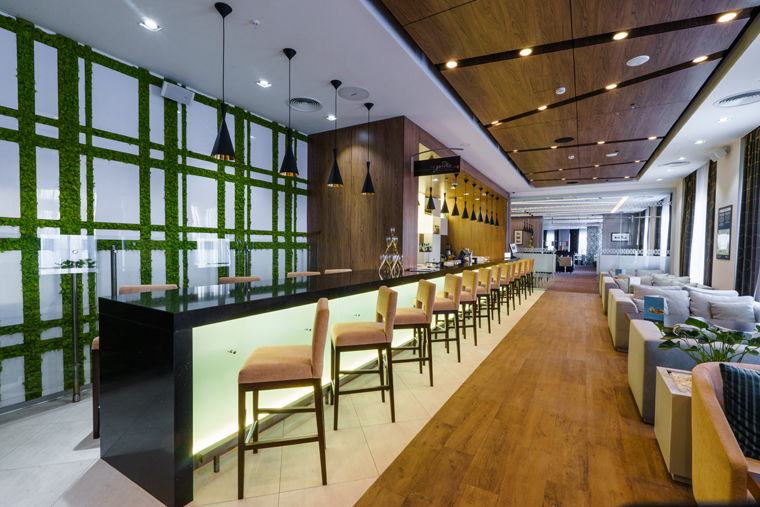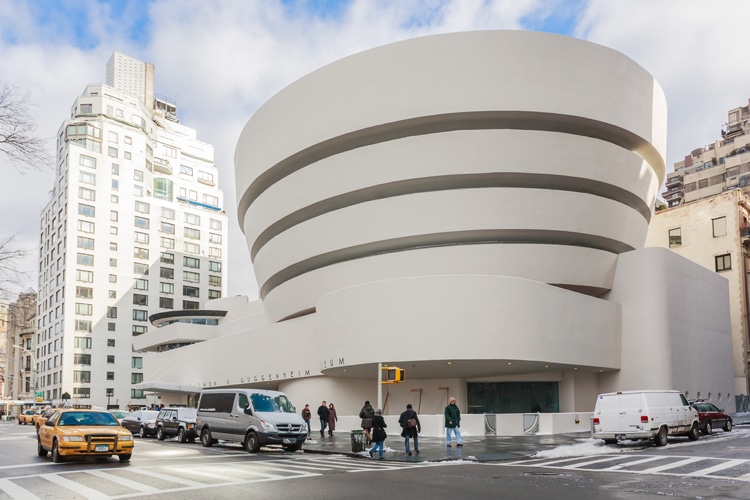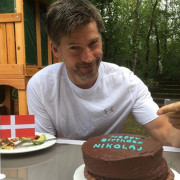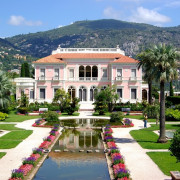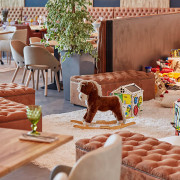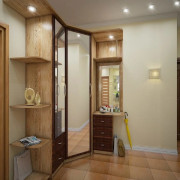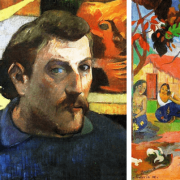Вагнер, отто
Содержание:
- Urban Planning and the Vienna Stadtbahn (1894–1900)
- Education and early career
- Биография[править | править код]
- Publications
- Early projects, and the First Villa Wagner (1880s)
- Биография
- Majolika-Haus and the Linke Wienzeile buildings (1898-99)
- References
- The Vienna Secession
- Later life and projects
- The Second Wagner Villa (1912)
Urban Planning and the Vienna Stadtbahn (1894–1900)
In the 1890s, Wagner became increasingly interested in urban planning. Vienna was a growing rapidly; it reached a population of 1,590,000 residents in 1898. In 1890, the city government decided expand the urban transit system outwards to the new neighborhoods. In April 1894, Wagner was named artistic counselor for the new Stadtbahn and gradually was given responsibility for the design of the bridges, viaducts, and stations, including the elevators, signs, lighting, and decoration. Wagner hired seventy artists and designers for his transit stations, including two young designers who later became very prominent in the birth of modern architecture, Joseph Maria Olbrich and Josef Hoffmann.
The government committee in charge of the project specified that the buildings should be covered in white plaster, for uniformity, and that the style should be Renaissance, also for uniformity. Working within these requirements, Wagner designed stations and other structures which combined utility, simplicity and elegance. The most notable station he designed was Karlsplatz station (1894-99). It had two separate pavilions for the two directions, and was constructed with a metal frame, and covered on the exterior with marble plaques and plaster plaques in the interior. The exterior was covered with designs in a sunflower patter, which continue on the semi-circular facade. The carefully designed gilded decoration gives the building a remarkable combination of functionality and elegance.
Education and early career
Wagner was born in 1841 in Penzing, a district in Vienna. He was the son of Suzanne (née von Helffenstorffer-Hueber) and Rudolf Simeon Wagner, a notary to the Royal Hungarian Court. He began his architectural studies in 1857 at the age of sixteen at the Vienna Polytechnic Institute. When he finished his studies there, in 1860 he traveled to Berlin and studied at the Royal Academy of Architecture under Carl Ferdinand Busse, a classicist and student of Karl Friedrich Schinkel, the leader of the German school of neoclassical and neo-Gothic architecture. He returned to Vienna in 1861 and continued his architectural education at the Vienna Academy of Fine Arts, under August Sicard von von Sicardsburg and Edouard von der Nüll, who had designed the neoclassical Vienna State Opera and the architectural monuments along the Vienna Ringstraße.
In 1862, at the age of 22, he joined the architectural firm of Ludwig von Förster, who studio had designed much of the new architecture along the Ringstraße. The first part of his career was devoted to the transformation of that boulevard into showcase of neo-Gothic, neo-Renassiance, and neoclassical styles. During this period, which lasted until about 1880, he described his own style as «a sort of free Renaissance».
His first realized major project was an Orthodox Synagogue on Rumbach Street in Budapest. His design was selected in a competition held in 1868, when he was twenty-seven years old. The octagonal hall of the synagogue was concealed behind a four-story structure facing the street. The hall was filled with light from stained glass windows windows on the octagonal lantern above, and large circular windows in each of the eight bays. On the first floor above the ground floor was an octagonal gallery reserved for women. The facade was made of brick of different colors, and was decorated with minarets and towers with a Moorish appearance, while the interior featured colorful patterns of mosaic slender on the walls and highly decorated columns which supported arches over each of the bays.
He began to develop his own philosophy of architecture, based the need for buildings to be, above all, functional. He continued to develop this idea throughout his career. In 1896, in his book Modern Architecture, he wrote, «only that which is practical can be beautiful».
Биография[править | править код]
Образование и начало карьерыправить | править код
Грабенхоф, 1874—1877 — типичная венская эклектика
Отто Вагнер родился в семье преуспевающего придворного нотариуса в Пенцинге (сегодня — район Вены, примыкающий к императорской резиденции Шёнбрунн), Рудольфа Симеона Вагнера. Отец умер, когда Отто было пять лет. Несмотря на нужду, мать, Сюзанна фон Хелффенсторфер-Хюбер, сумела дать ему достойное образование. В 1857—1862 Вагнер обучался вначале в Венском политехникуме, затем в Академии изобразительных искусств. В 1862 году Вагнер устроился подмастерьем на фирму архитектора Генриха Фёрстера (сына Людвига Фёрстера, строителя Рингштрассе). В 1864 году Фёрстер доверил Вагнеру первую самостоятельную работу — руководство постройкой главного павильона, курсалона Хюбнера, в венском городском парке. В последующие два десятилетия Вагнер успешно строил чужие и собственные проекты в стиле поздней эклектики. На рубеже 1870-х — 1880-х годов Вагнер создал массу проектов; некоторые из них он реализовал как независимый застройщик, но в целом этот этап его творчества остаётся мало изученным. Первый печатный сборник его проектов вышел в 1890 году.
Эпоха модернаправить | править код
В середине 1890-х годов Вагнер отходит от эклектичного историзма — к модерну. В отличие от ведущих архитекторов модерна, которые в это время только начинали профессиональную деятельность (Виктор Орта, Чарлз Ренни Макинтош, Л. Н. Кекушев — поколение родившихся в 1860-х), Вагнер застал рождение модерна уже будучи известным, коммерчески успешным архитектором и застройщиком. Его ученики основали успешное объединение сторонников нового стиля, Венский сецессион, тогда как сам Вагнер в этот период строил относительно немного. Сам он присоединился к движению сецессиона только в 1899 году.
Венский штадтбан, станция «Гумпендорферштрассе»
С 1894 года, когда Вагнер был привлечён к планировке Венского Штадтбана, он сосредоточился на крупных градостроительных и инфраструктурных проектах. Его проект реконструкции южных районов Вены (от Рингштрассе до реки Вена на юге и до Шенбрунна на западе) 1892—1893 годов не был реализован (были построены только два дома по набережной Wienzeile и спланирован рынок Нашмаркт). Вагнеру удалось завершить не менее масштабный проект — архитектурную часть городской железной дороги (Штадтбана), большая часть которой сохраняется по сей день, а также защитный гидроузел на реке Вене. В 1900—1908 Вагнер последовательно создал четыре конкурсных проекта музея города Вены; конкурсы ознаменовались скандалами и непримиримым столкновением разных творческих школ. В итоге здание так и не было построено при жизни архитектора; современный музей Вены на Карлсплац — скромная постройка в духе 1960-х годов.
Особенности архитектуры Вагнера этого периода — стремление к упрощению форм зданий (гладкие стены, расчленённые вертикалями плоских ризалитов и пилястров), в сочетании с характерным вагнеровским «золотым» декором и широким применением кованого железа. Цветовая гамма — белая или светло-серая основа, украшенная нейтрально-серым, тёмно-зелёным и (или) золотым декором. Традиционная вагнеровская деталь — тонкие параллельные вертикальные канелюры по поверхности плоского пилястра — была моментально растиражирована архитекторами модерна.
Поздний периодправить | править код
Церковь Св. Леопольда при госпитале Отто Вагнера, 1904—1907
Наиболее заметные постройки Вагнера датированы 1900-ми годами, когда архитектор завершил проектирование Штадтбана. В 1904—1906 он строит из бетона и алюминия, в 1904—1907 — церковь Am Steinhof. В те же годы Вагнер проектировал аналогичные общественные здания для Гааги, Сан-Франциско и других городов, а также Храм Мира в Вене (1918). Крупнейший реализованный проект тех лет — госпиталь в пригороде Вены (современный Otto-Wagner-Spital (1906—1910-е).
Личная жизньправить | править код
В 1863 году по настоянию матери Отто женился в первый раз, и имел от этого брака двух дочерей. Одновременно с этим браком, он много лет сожительствовал с Софией Паупи (1840—1912), которая родила ему также двоих детей; Вагнер официально усыновил их в 1882 году, после развода. В 1884 он женился второй раз, в этом браке родились трое детей. Вторая жена Луиза Штифль была на 18 лет моложе Вагнера и умерла рано, в 1915 году.
Вагнер скончался 11 апреля 1918 года, незадолго до окончания Первой мировой войны, в своей квартире на Дёблергассе в Вене.
Похоронен на Хитцингском кладбище.
Publications
Wagner, Otto (1988). Modern Architecture: A Guidebook for His Students to This Field of Art. Trans. Harry F. Mallgrave. Santa Monica: Getty Center for the History of Art and the Humanities. ISBN 0-226-86938-5..mw-parser-output cite.citation{font-style:inherit}.mw-parser-output .citation q{quotes:»\»»»\»»»‘»»‘»}.mw-parser-output .id-lock-free a,.mw-parser-output .citation .cs1-lock-free a{background-image:url(«//upload.wikimedia.org/wikipedia/commons/thumb/6/65/Lock-green.svg/9px-Lock-green.svg.png»);background-image:linear-gradient(transparent,transparent),url(«//upload.wikimedia.org/wikipedia/commons/6/65/Lock-green.svg»);background-repeat:no-repeat;background-size:9px;background-position:right .1em center}.mw-parser-output .id-lock-limited a,.mw-parser-output .id-lock-registration a,.mw-parser-output .citation .cs1-lock-limited a,.mw-parser-output .citation .cs1-lock-registration a{background-image:url(«//upload.wikimedia.org/wikipedia/commons/thumb/d/d6/Lock-gray-alt-2.svg/9px-Lock-gray-alt-2.svg.png»);background-image:linear-gradient(transparent,transparent),url(«//upload.wikimedia.org/wikipedia/commons/d/d6/Lock-gray-alt-2.svg»);background-repeat:no-repeat;background-size:9px;background-position:right .1em center}.mw-parser-output .id-lock-subscription a,.mw-parser-output .citation .cs1-lock-subscription a{background-image:url(«//upload.wikimedia.org/wikipedia/commons/thumb/a/aa/Lock-red-alt-2.svg/9px-Lock-red-alt-2.svg.png»);background-image:linear-gradient(transparent,transparent),url(«//upload.wikimedia.org/wikipedia/commons/a/aa/Lock-red-alt-2.svg»);background-repeat:no-repeat;background-size:9px;background-position:right .1em center}.mw-parser-output .cs1-subscription,.mw-parser-output .cs1-registration{color:#555}.mw-parser-output .cs1-subscription span,.mw-parser-output .cs1-registration span{border-bottom:1px dotted;cursor:help}.mw-parser-output .cs1-ws-icon a{background-image:url(«//upload.wikimedia.org/wikipedia/commons/thumb/4/4c/Wikisource-logo.svg/12px-Wikisource-logo.svg.png»);background-image:linear-gradient(transparent,transparent),url(«//upload.wikimedia.org/wikipedia/commons/4/4c/Wikisource-logo.svg»);background-repeat:no-repeat;background-size:12px;background-position:right .1em center}.mw-parser-output code.cs1-code{color:inherit;background:inherit;border:inherit;padding:inherit}.mw-parser-output .cs1-hidden-error{display:none;font-size:100%}.mw-parser-output .cs1-visible-error{font-size:100%}.mw-parser-output .cs1-maint{display:none;color:#33aa33;margin-left:0.3em}.mw-parser-output .cs1-subscription,.mw-parser-output .cs1-registration,.mw-parser-output .cs1-format{font-size:95%}.mw-parser-output .cs1-kern-left,.mw-parser-output .cs1-kern-wl-left{padding-left:0.2em}.mw-parser-output .cs1-kern-right,.mw-parser-output .cs1-kern-wl-right{padding-right:0.2em}.mw-parser-output .citation .mw-selflink{font-weight:inherit}
Early projects, and the First Villa Wagner (1880s)
In the 1880s, he began to construct buildings of which he was both the architect and investor in the project, sharing in the financial benefits. In 1882 he designed a luxury apartment building on Stadiongasse in Vienna, close to the Parliament and the city hall. The facade was inspired by the Renaissance, but the interior was designed to be highly practical, luxurious, and constructed with the highest quality materials available. The benefits of this building allowed him to build several more similar apartment buildings. It illustrated his doctrine of the connection between beauty and function.
His next major project was the headquarters of the Austrian Länderbank in Vienna. He won the design competition in 1882 and built it in 1883–84. It was built on a very irregular site, mostly at an angle to the street, which allowed him to be more creative. The five-story Renaissance facade gave little idea of the complexity of the building behind it, which had multiple diverging axes. The visitor passed through a circular vestibule, then turned at an angle into multi-storied semi-circular central hall with a glass skylight, where the banking function was located. He also used new materials, such as an enduit lisse, and much larger windows than were customary in the period, repeated the plan on each floor. He later described his approach to the building: «The demands for air and light, the desire to assure easy circulation and orientation inside the space, and especially the fact that the activities of a bank can develop on one direction or another, made it desirable to be able to easily transform the work spaces.» He was to follow the same concepts twenty years later when he designed the Postal Savings Bank in Vienna.
The following project, in 1886, was the first Villa Wagner, a country house he built for himself on the edge of the Vienna woods. He called it his «Italian Dream», and it had neoclassical elements inspired by Palladio. it was surrounded by a park carefully designed to complement the architecture. The principal facade had a double stairway ascending to a portico with a colonnade, which was the entrance to the grand salon. The porch was decorated curving wrought iron, statuary, and a coffered ceiling. At either end of the main villa were pergolas with open colonnades. On either side of the main stairway to the entrance he placed plaques in Latin concisely stating his philosophy On one side, «Without art and love, there is no life»; and on the other, «Necessity is the sole mistress of art.» In 1895, he modified the house. One of the pergolas was transformed from a winter garden into billiards room, illuminated by floral stained glass windows on designed by the painter Adolf Böhm. The other pergola was made into his studio, also with colorful decorative windows,
Two more of his buildings appeared on the boulevards of Vienna. The first, completed in 1887, was a six-story apartment building on Universitätsstrase, which had a rigorous vertical facade divided by ornamental pilasters, divided horizontally by very ornate wrought iron balcony on the first floor and a sculpted cornice beneath the roof, dividing the facade into three distinct parts. The second was the Zum Anker building on Spiegelgasse, and the Graben, the historic boulevard in the heart of the city. This building, completed in 1894, combined apartments on the upper floors and stores on the street level, fearing large display windows. On top was another glass structure, like a small temple, which contained a photography studio. It was another notable example of Wagner skillfully adapting the design of the building to its practical functions.
Биография
Выдающийся австрийский архитектор, представитель стиля модерн. «За единственную основу нашего художественного творчества надо принять современную жизнь».
Родился близ Вены. Окончил Политехникум (1857), Академию художеств (1861–63) в Вене и Строительную академию в Берлине (1860).
По окончании Академии Вагнер сразу же включился в строительную деятельность, участвовал в многочисленных архитектурных конкурсах, таких как ратуша в Гамбурге (1876); Рейхстаг в Берлине (1882); парламент в Будапеште (1882); биржа в Амстердаме (1884). В течение 15 лет занимался частной практикой. Много строил, главным образом дома и виллы, в неоренессансном стиле. В прихотливых по композиции ранних постройках использовал обильный изощренный декор. Впоследствии обратился к поискам рациональных и простых художественных решений.
Политехническое образование, полученное архитектором, позволяло ему ориентироваться в строительном производстве. Благодаря этому он получил государственный заказ на строительство городских коммуникаций: Вагнер спроектировал и осуществил строительство четырех железных дорог в городе и ряда гидротехнических сооружений на Дунайском канале. В чисто технические сооружения Вагнер привнес свои архитектурные познания, подняв их на качественно иной уровень
Для этих работ характерно внимание к архитектурной детали
Наиболее насыщенный период в творческой жизни Вагнера приходится на 90-е годы XX столетия. В это время он становится профессором венской Академии художеств (1894–1912) и создает книгу «Современная архитектура», ставшую евангелием нового рационалистического движения в архитектуре.
Когда его ученики — И. Ольбрих и И. Гофман вместе с художником Густавом Климтом и архитектором Карлом Мозером объединились в борьбе против Академии и образовали Сецессион (1897), Вагнер эпатировал коллег, став членом Сецессиона (1899–1905).
В 1890-е он получил заказ на создание генерального плана Вены, итоги работы над которым зодчий сформулировал позднее в своем трактате «Большой город» (1911). Одним из важнейших направлений развития города явились транспортные развязки. В 1900 архитектор завершил работу для Управления дорог, исполнив проекты тридцати шести станции наземной железной дороги в Вене.
Последовавшие вслед за тем несколько сооружений, в том числе здание сберегательной кассы (1904), оказали не меньшее влияние на развитие архитектуры, чем его теоретические взгляды. Вальтер Гропиус писал: «В Австрии на грани веков Отто Вагнер построил здание сберегательной кассы. Он отважился подчеркнуть чистую плоскость крыши без опоясывающей профилировки. Мы сегодня вряд ли сможем себе представить, какая революция произошла от этого шага».
Большой вклад внес Вагнер в воспитание архитекторов как руководитель архитектурного класса венской Академии художеств (1894–99) и созданной им школы «Вагнершуле» (1901–05). Он выступал против правила посылать выпускников Академии в Италию, так как считал, что это мешает архитектору искать новые средства выразительности. Наиболее знаменитыми его учениками были Йозеф Мария, Йозеф Хоффман, Адольф Лоз (Лоос).
Основной проблемой его творчества была проблема стиля. Изучая исторические стили, он ратовал за создание стиля, достойного современной эпохи. От прихотливых по композиции сооружений, изобилующих сложным декором, перешел к геометрически четким, рациональным сооружениям.
Majolika-Haus and the Linke Wienzeile buildings (1898-99)
The Linke Wienzeile Buildings are three apartment buildings in Vienna, constructed in 1898–99. The most famous of these is the Majolica House, at 40 Linke Wienzeile. Its facade is entirely covered with majolica, or glazed earthenware tiles in the colorful floral designs which characterized the early Vienna Secession. The Art Nouveau floral design of its facade was made by his student Alois Ludwig . The other building, Linke Wienzeile 38, is known as House with medallions because of its decor of gilded stucco medallions by Wagner’s student and frequent collaborator, Koloman Moser. The roof, visible from far away, features several sculpted heads, called The Criers, or The Crying Women by Othmar Schimkowitz. He provided sculpture for two other Vienna Secession landmarks by Hoffmann, including the Angels on the roof of the Kirche am Steinhof church in Vienna, and sculpture for the Austrian Postal Savings Bank. The sculptures and other ornament were removed when the style was out of fashion, but have more recently been restored.
Wagner had his own town apartment in a third building, at 3 Köstlergasse. It featured decoration based on Japanese floral prints, and furniture of his own design, but its most famous feature was the bathroom. A marble plaque on the wall supported the shower head, the sink was of marble on nickel legs, and the bathtub was of glass, mounted in a nickel frame. Wagner had the bathroom displayed at the 1900 Paris Universal Exposition.
References
- Oudin, ‘Dictionnaire des Architects, p. 536.
- Sarnitz, August, Otto Wagner (2018), p. 9-10.
- ^ Sarnitz, August (2005). Otto Wagner: Forerunner of Modern Architecture. Taschen. ISBN 3-8228-3647-8.
- , pp. 10-11. sfn error: multiple targets (2×): CITEREFSarnitz2018 (help)
- Sarnitz (2018), p. 10.
- . sfn error: no target: CITEREFSarnitz_(2018),_p,_10 (help)
- Sarnitz (2018), p. 11.
- Sarnitz (2018), p. 21.
- Sarnitz (2018), p. 23.
- Sarnitz (2018), p. 26.
- Sarnitz (2018), p. 30-31.
- Fahr-Becker (2015), p. 348.
- Sarnitz (2018), p. 33.
- Fahr-Becker (2015), pp. 347-348.
- Cited in Sarnitz, August, Hoffmann (2016), p. 12.
- Fahr-Becker, L’Art Nouveau (2015), p. 336.
- Fahr-Becker, L’Art Nouveau (2015), p. 336.
- Schacherl, Lillian (1993). Vienna. Prestel guide. Prestel. p. 124. ISBN 978-3-7913-1236-1.
- Metzger, Vienne des Années 1900 (2018), p. 38.
- Sarnitz (2018), p. 50.
- Sarnitz (2018), pp. 56-60.
- Wagner, Otto, Die baukunst unserer Zeit; Dem Baukunstjünger ein Führer auf diesem Kunstgebiet 4th edition, Vienna (2014). Cited in Fahr-Becker (2015)
- Sarnitz (2018), pp. 63-71.
- Sarnitz (2018), pp. 70-73.
- Sarnitz (2018), p. 85-87.
The Vienna Secession
In 1894, he became Professor of Architecture at the Academy of Fine Arts Vienna, and increasingly expressed the necessity of leaving behind historical forms and romanticism and developing Architectural Realism, where the form was determined by the function of the building. In 1896 he published a textbook entitled Modern Architecture in which he expressed his ideas about the role of the architect; it was based on the text of his 1894 inaugural lecture to the Academy. His style incorporated the use of new materials and new forms to reflect the fact that society itself was changing. In his textbook, he stated that «new human tasks and views called for a change or reconstitution of existing forms». He wrote in his manifesto on Modern Architecture, «Art and artists have the duty and obligation to represent their period. The application here and there of all the previous styles, as we have seen in the last few decades, cannot be the future of architecture…The realism of our time must be present in every newborn work of art.
In 1897, he aligned himself with Vienna Secession, a movement started by fifty Vienna artists formally known as the Association of Austrian plastic artists. Its founding members included Gustav Klimt, its first President, Joseph Maria Olbrich, Josef Hoffmann and Koloman Moser The Secession declared war on the historicism and realism decreed by the Arts academies, and called for the abolition of the boundary between the fine. arts and the applied and decorative arts. of architecture and art. Its goal was proclaimed by Wagner’s student, Olbrich: «To each epoch its own art, and to each art its freedom.» The most famous architectural work of the Secession, Olbrich’s Secession Building (1897-98) showed Wagner’s influence. However, after the success of Secession works at the 1900 Paris Exposition, many of the members wanted to produce furniture and other Secession designs in series, and disputed the direction of the Secession. The dispute reached a head in 1905, when one of the prominent painters of the Secession, Carl Moll, proposed that the Secession purchase a prominent Vienna art gallery as an outlet for the Secession artists. This was opposed by the more traditional artists in the group. It was put to a vote of the members of the Secession, and Klimt’s position was defeated by a single vote. Klimt, Wagner, Moser and Hoffmann promptly resigned from the Secession.[failed verification]
Wagner had a strong influence on his pupils at the Academy of Fine Arts in Vienna. This «Wagner School» included Josef Hoffmann, Joseph Maria Olbrich, Karl Ehn, Jože Plečnik and Max Fabiani. Another student of Wagner’s was Rudolph Schindler, who said «Modern Architecture began with Mackintosh in Scotland, Otto Wagner in Vienna, and Louis Sullivan in Chicago.»
Later life and projects
By 1905, the year he left the Vienna Secession, Hoffman had achieved an international reputation. In that year he proposed a monumental plan for the Palace of Peace proposed by philanthropist Andrew Carnegie for construction of the Hague, but it was never realized. His continued to produce new editions of his book Modern Architecture, and three volumes entitled Sketches, Projects, Constructions. He published a series of books on topics including theater architecture, hotel architecture, and a particularly forward-looking work, «The Great City», published in 1911, devoted to urban planning, explaining how the expansion of large cities should be managed. He participated in the International Congress of Architecture in London in 1906, and traveled to New York to the International Congress of Urban Art in 1910. In the same year he became the Vice Rector of the Academy of Fine Arts in Vienna. He was named Vice President of the Permanent Commission of Congress of Fine Arts in Paris in 1912. In 1912 he proposed a very modern municipal museum for Vienna dedicated to The Emperor Franz-Joseph. However, the final competition for this building was won by one of Wagner’s former students, Josef Hoffmann. The project was halted by the outbreak of the First World War in 1914. In 1913, he became an honorary professor at the Academy and retired, but continued to teach students who had enrolled prior to his retirement.
While he proposed many projects, only a few were actually built. These included a strikingly geometric and modernistic hospital for victims of Lupus disease in Vienna (1908). His last large-scale project, a building of thirty large apartments on Neustiftgasse and Döblergasse in Vienna. The building had a very modern white plaster facade with very discreet geometric decoration of blue ceramics (Döblergasse) and pieces of black glass (Neustifgasse). Wagner had his own apartment on the second floor of the Döblergasse building. He designed all the furniture, carpets and decoration in his apartment, as well as the towels and bathroom fixtures. The ground floor of this building also served as the offices of the Wiener Werkstätte architectural movement from 1912 until 1932.
The Second Wagner Villa (1912)
Another of his last projects was the Second Wagner Villa on Hüttelbergstrasse in Vienna. It was located near to, and in sight of, his first villa, which he had sold in 1911. It was considerably smaller than his earlier villa. The building was designed to be extremely simple and functional, with a maximum of light, and a maximum use of new materials, including reinforced concrete, asphalt, glass mosaics, and aluminum. The villa is in the form of a cube, with white plaster walls. The primary decoration elements of the exterior are bands of blue glass tile in geometric patterns. The front door is reached by a monumental stairway to the first floor. The servant’s quarters were downstairs, and the main floor was occupied by a large single room, which served as a salon or dining room. For the furniture, he selected many works designed and manufactured by one of his former students, Marcel Kammerer.
Wagner intended the house as the main residence of his wife after his death, but she died before him, and he sold the house in September 1916.
Wagner died on April 11. 1918, shortly before the end of the First World War, in his apartment on Döblergasse in Vienna.
